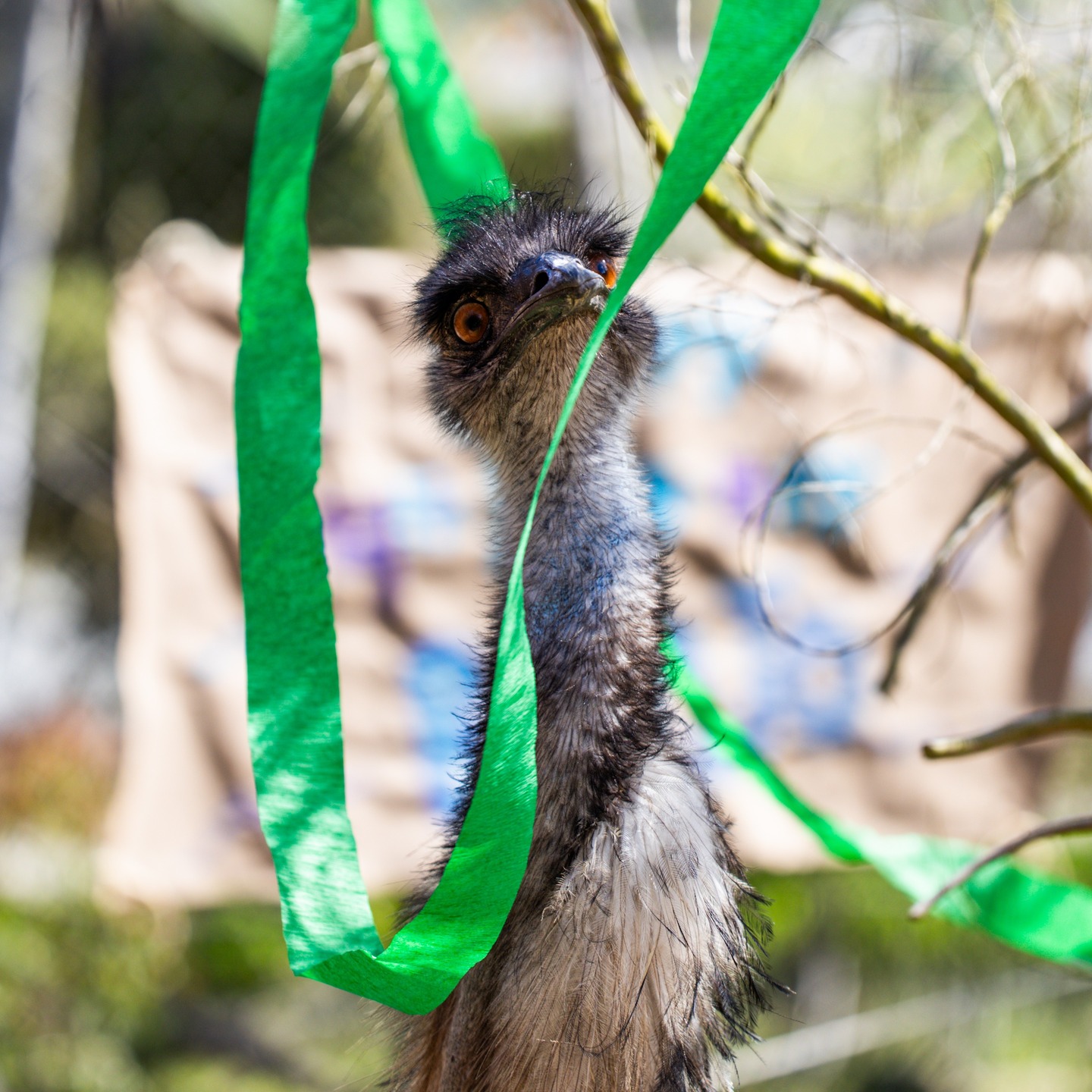- Celebration of Banjo the Emu’s fourth hatch day at the Zoo.
- The lifestyle and characteristics of emus within a zoological setting.
- The significance of enrichment activities for animals in captivity.
- Insights into the diet and care required for emus.
- The broader importance of zoo-based conservation efforts for wildlife.
Banjo the emu marked a milestone recently, celebrating his fourth hatch day at the zoo, surrounded by both familiar surroundings and new experiences. This event wasn’t just about observing another year of his life; it was a celebration and an educational opportunity to delve into the fascinating life of emus. Banjo, the Australian Walkabout’s resident flightless bird, indulged in an ice cake made with pomegranates and blueberries, one of his culinary favorites. His bird-day was enhanced with play activities involving streamers and toys, engaging him physically and mentally.
Emus, like Banjo, possess intriguing characteristics that contribute to their charm and adaptability in varied environments. Native to Australia, they are the second largest bird by height after the ostrich. Emus belong to the ratite group, characterized by their flat breastbone lacking the keel to which winged birds attach flight muscles. This group includes other flightless species like the kiwi and cassowary. While emus cannot fly, they are equipped with powerful legs that enable them to run swiftly, often reaching speeds of up to 30 mph. Their ability to traverse vast distances proves essential in their natural habitat, where they forage for sustenance and water across varied terrains.
Creating a stimulating environment for animals like Banjo is vital for their well-being in a zoo setting. Enrichment activities such as those conducted during his hatch day celebration provide mental and physical stimulation. Streamers and toys are not just visual distractions but tools that promote natural behaviors such as pecking and playful interaction. Similarly, his fascination with ice cubes showcases emus’ affinity for curious engagement. These purposeful activities are carefully crafted to mimic conditions and challenges faced in the wild, promoting a healthy mind and body.
The dietary habits of emus are likewise important to understand, as they require specific nutrition to maintain optimal health. In the wild, these birds are omnivorous, feeding on a variety of plants, seeds, insects, and even small vertebrates when the opportunity arises. The ice cake created by Chef Trent was a reflection of this varied diet, integrating fruits such as pomegranates and blueberries, which are both nutritious and appealing to Banjo. An emu’s diet in captivity is balanced with grains, vegetables, and formulated pellets that provide necessary vitamins and minerals. Attention to diet is crucial, as it influences not only their physical health but also their energy levels and behavior, ensuring that they remain active and content.
Zoo environments play an increasingly vital role in the conservation and education about wildlife. While zoos offer a chance to get closer to animals like Banjo, they are also at the forefront of efforts to maintain and protect biodiversity. Many species have been saved from the brink of extinction due in part to breeding programs and research conducted in zoological settings. Zoos provide a sanctuary for animals affected by habitat loss, climate change, and human encroachment. They also serve as centers for public education, raising awareness about the challenges faced by wildlife and the steps needed to secure their future.
The celebration of Banjo’s hatch day isn’t merely a festive occasion; it is an embodiment of the commitments that zoos have toward animal care and conservation. Banjo, as a representative of his species, offers insights into the ecological roles that emus play within the ecosystems they inhabit. They contribute to seed dispersal through their feces, aiding in plant regeneration across vast landscapes. As climate change and human activities continue to impact natural habitats, understanding and supporting such roles becomes ever more important.
In addition to promoting environmental responsibility, Banjo’s celebration captures the joy and wonder inherent in wildlife observation. Observing his interactions with his surroundings provides lessons in adaptability, intelligence, and resilience. While the sight of a giant bird playing with streamers might seem whimsical, it underscores a deeper narrative of connection between humans and the animal world.
Ultimately, Banjo’s hatch day at the zoo highlights a broader conversation on how zoos can innovate in wildlife conservation and education. It urges continued introspection and action on how best to preserve the diversity of life that shares our planet. From the joyous play of a single emu to the collective efforts of zoo institutions worldwide, the message is clear: there is much to celebrate, and even more to secure, for the well-being of creatures like Banjo and their wild counterparts.
*****
Source Description
Wishing a very happy BIRD-day to Banjo the emu! 🥳🎂🎉
Banjo celebrated his 4th hatch day at the Zoo today! The Australian Walkabout’s resident flightless bird had a blast playing with streamers and toys, pecking at ice cubes (one of his favorite pastimes), and feasting on his custom pomegranate and blueberry ice cake prepared by Chef Trent!
Alt-text: Pictures from Banjo the emu’s 4th hatch day happenings. In the first, our feather friend stares delightedly at a green streamer hanging from a tree in his habitat. Next, we see him smile after ripping the streamer apart. In the third shot, Banjo curiously approaches his red, white, and blue ice cake. Finally, we see the happy hatch day celebrator admiring his bird-day decorations in the last close-up.


